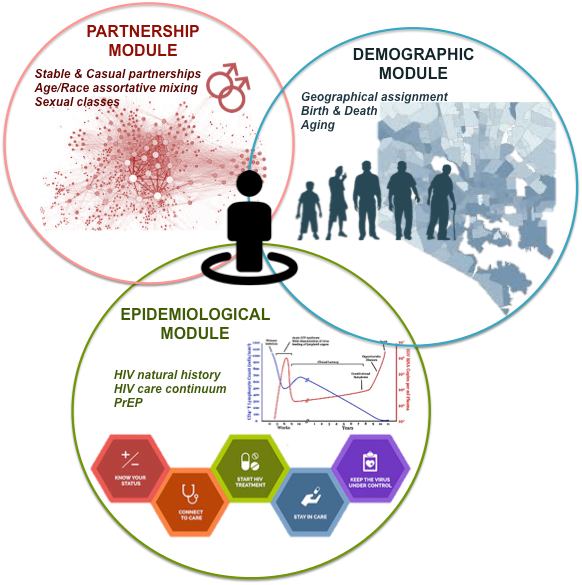Staff & Leadership
Parastu Kasaie, MS, PhD

Biography
Associate Researcher
Department of Health, Behaviour and Society, Bloomberg School of Public Health
The Johns Hopkins University
Research interests
Simulation, Modeling, HIV/TB, Infectious Disease Dynamics, Public Health
Methods of expertise
Trained in the filed of engineering and operation research, Dr. Kasaie’s research focuses on the development and analysis of computer simulation models of infectious disease in human population and implications for policy making. Her research interests include modeling and simulation of social/epidemiological systems, resource allocation, HIV/AIDS, Tuberculosis, biostatistics, public health policy making. Her current research focuses on modeling the epidemic of HIV/AIDS and other Sexually Transmitted Infections (STIs) among Men who have Sex with Men (MSM) in Baltimore City. Dr. Kasaie is a member of JHU Center For AIDS Research (CFAR) and the JHU Center For Tuberculosis Research.
Services available to CFAR investigators
Individual- (agent-) based simulation modeling, mathematical modeling, data analysis, quantitative evaluation, study design, expertise in transmission dynamics and HIV/TB dynamics
Sample projects
- The Impact of Pre-Exposure Prophylaxis Among Men Who Have Sex With Men: A Modeling Study
In collaboration with the CDC and Baltimore City Health Department, I have developed an individual-based simulation of HIV/STI epidemics among Men who have Sex with Men (MSM) in Baltimore city. We have applied our model to understand the dynamics of HIV and Gonorrhea/Chlamydia co-infection in Baltimore, and to evaluate the population-level impact of PrEP on incidence and prevalence of these diseases over the next decade.

- Modeling preventive therapy for multi drug-resistant Tuberculosis infection
We are developing an individual-based simulation model of a multidrug-resistant (MDR) tuberculosis (TB) epidemic to estimate the impact of preventive therapy for MDR-TB, including administration based on household contacts or other known MDR exposures in India. Providing MDR-active preventive therapy to known close contacts of MDR-TB cases (e.g. household members) is a promising intervention that may have a great impact on MDR-TB incidence, but this impact may depend heavily on epidemiologic parameters such as the force of TB infection, the fraction that is MDR, the balance of recently-infected versus reactivated cases, the fraction of DS TB transmission that occurs within households, and the extent of delays in MDR-appropriate treatment initiation. As such, we set forward a modeling approach (similar to our previous study*) to estimate the population-level impact of this intervention under a variety of assumptions deriving the MDR-TB India and other countries.
*Kasaie P, Andrews JR, Kelton WD, Dowdy DW. Timing of tuberculosis transmission and the impact of household contact tracing. An agent-based simulation model. Am J Respir Crit Care Med. 2014 Apr 1;189(7):845-52. doi: 10.1164/rccm.201310-1846OC.
- Guidelines for design and analysis in agent-based simulation studies
Agent-based simulation (ABS) continues to grow in popularity and in its fast-expanding application in various fields. Despite the increased interest, however, a common protocol or standard curriculum for development and analysis of ABS models hardly exists, and there is a gap between traditional simulation theory and current practices of ABS in the literature. This points to great unevenness among existing ABS applications in terms of concepts and design, quantitative and computational techniques used in analysis of models, as well as domain-specific issues in different fields. In this paper*, we review a number of important topics and issues in the design and analysis of ABS models that deserve attention. Our discussion is supported by some illustrative examples from ABS models of disease epidemics, but it's applicable to a fairly general class of ABS models.
*Kasaie P, Kelton W. Guidelines for design and analysis in agent-based simulation studies. Proceedings of the 2015 Winter Simulation Conference. 2015 December 06:183-193.

